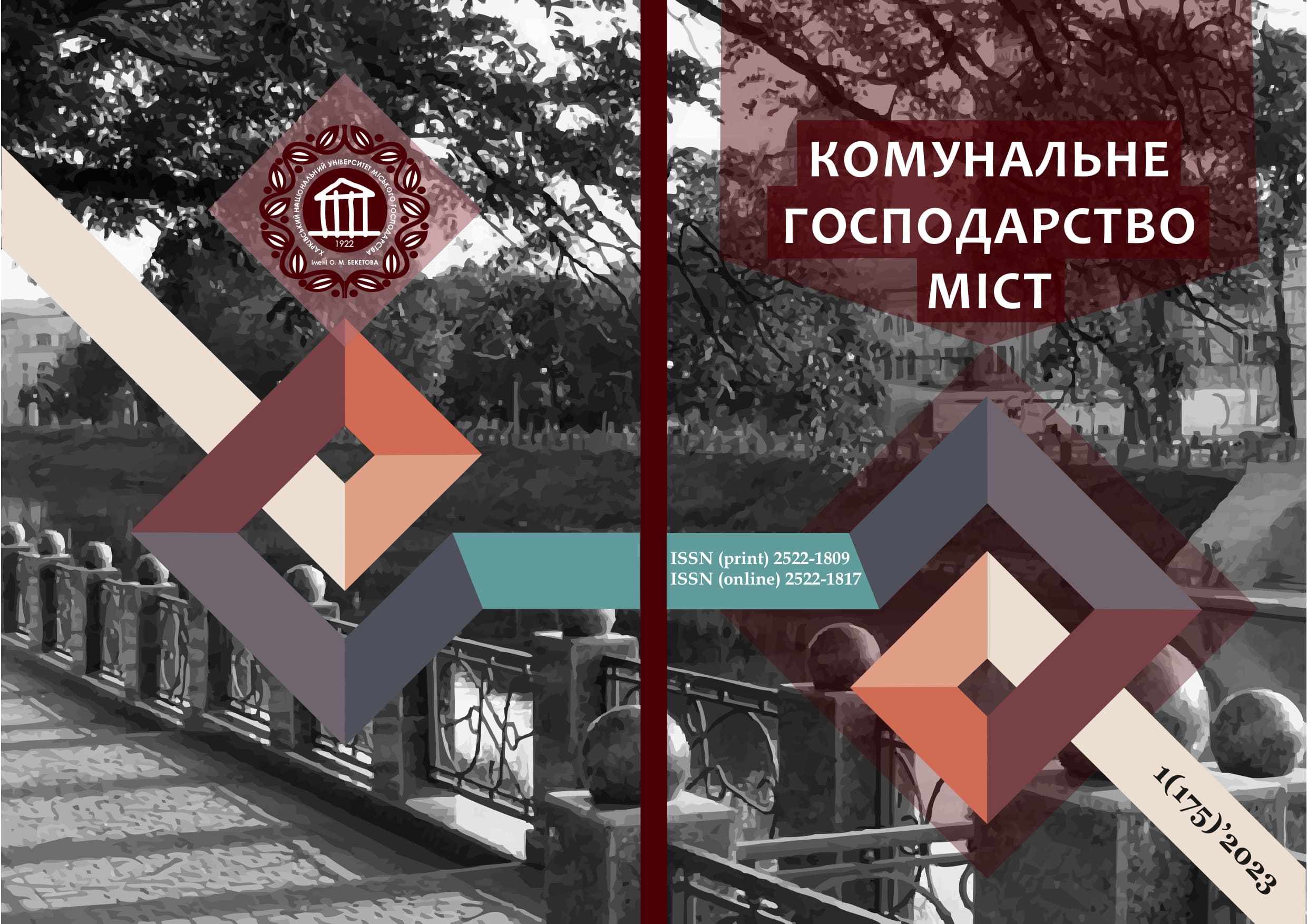RESEARCH OF THE AERODYNAMIC PROCESS OF CARBON DUST REMOVAL FROM THE WORKING ZONE
DOI:
https://doi.org/10.33042/2522-1809-2023-1-175-208-220Keywords:
carbon dust, aerodynamic calculation, engineering simulation, occupational diseases, occupational healthAbstract
The purpose of this work is research of the aerodynamic process of carbon dust removal from the working zone in order to create safe and harmless working conditions at the production site.
As a result of the research, an aerodynamic calculation of a long air duct of uniform suction with tangential air intake was performed. The degree of twisting of the air flow inside the air duct, as well as the uniformity of air suction along the length of the long suction, were determined. A number of factors affecting the dust removal process have been established, such as suction torch long suction; coefficient of local suction resistance; forces of inertia and viscosity on the resistance of local suction. The dependence of the ratio of the width of the entrance hole to the diameter of the air duct on the local suction resistance, the dependence of the ratio of the areas of the entrance gap and the cross section of the transitional air duct on the local suction resistance, as well as the effect of the length of the entrance slot on the coefficient of local suction resistance were determined. The efficiency of suction of dust particles with an extended suction unit with tangential air entry has been proven.
For a more accurate analysis of the distance at which an extended extractor with tangential air intake can be placed relative to the dust source, it is necessary to conduct a dispersed dust analysis. For effective capture of specific dust, calculations should be based on the size of the dust, which occupies a larger share in the distribution of fractions. The smaller the dust particle, the further the suction device can be located.
To visualize the experimentally obtained results, simulation was performed in the FlowVision software in accordance with the mathematically calculated initial data.
During the simulation of the movement of dusty air in an extended extractor with a tangential entry into the system, the occurrence of swirling of the air flow has been proven. Due to this formation, the largest fractions of dust will move along the walls of the air duct. This makes it possible to use extended extractors to remove coarse fractions of dust contained in polluted air, organizing the removal of air moving near the walls of the air duct.
References
Chencheva, O., Burdeina, N., Lashko, Y., Shevchenko, V., & Petrenko, I. (2022). Influence of dust formation during mechanical processing of carbon-carbon composites on the risk of occupational diseases. Labour Protection Problems in Ukraine, 38(3–4), 25–33. https://doi.org/10.36804/nndipbop. 38-3-4.2022.25-33
Salenko, A., Chencheva, O., Glukhova, V., Shchetynin, V., Budar, M. R. F., Klimenko, S., & Lashko, E. (2020). Effect of slime and dust emission on micro-cutting when processing carbon-carbon composites. Eastern-European Journal of Enterprise Technologies, 3(1(105), 38–51. https://doi.org/10.15587/1729-4061.2020.203279
Hubachov, O., Sukach, S., Chencheva, O., & Tsybulnyk, N. (2021). Investigation of risks of insurance of accidents and traumatic events using the component method. Municipal Economy of Cities, 4(164), 178–190. https://doi.org/10.33042/ 2522-1809-2021-4-164-178-190
Cheberiachko, S., Deryugin, O., Nehrii, T., & Chencheva, O. (2022). Improvement of the procedure for selection of dust filter respirators on the basis of risk assessment. Journal of Donetsk Mining Institute, 1(50), 146–157. https://doi.org/10.31474/1999-981X-2022-1-146-157
Chenchevoy, V., Sukach, S, Chencheva, O, Fjodorova, N, & Hryhorieva, D. (2020). Study of parameters of hydro-aero-ionic composition of working room air with ultrasonic ionization. Journal of Donetsk Mining Institute, 2(47). 168−174. https://doi.org/10.31474/1999-981x-2020-2-168-175
Salenko, A., Chencheva, O., Lashko, E., Shchetynin, V., Klimenko, S., Samusenko, A., Potapov, A. & Gusarova, I. (2018). Forming a defective surface layer when cutting parts made from carbon-carbon and carbon-polymeric composites. Eastern-European Journal of Enterprise Technologies, 4(1 (94), 61–72. https://doi.org/10.15587/1729-4061.2018.139556
Bayraktar, S. & Turgut, Y. (2016). Investigation of the cutting forces and surface roughness in milling carbon fiber reinforced polymer composite material. Materiali in Tehnologije, 50 (2016) 4, 591–600. https://doi.org/10.17222/mit.2015.199
Sukach S., Kozlovs’ka T., Serhiienko I., Khodakovskyy O., Liashok I., & Kipko O. (2018). Studying and substantiation of the method for normalization of airionic regime at industrial premises at the ultrasonic ionization of air. Eastern-European Journal of Enterprise Technologies, 4(10 (94), 36–45 https://doi.org/10.15587/36-45 1729-4061.2018.141060
Downloads
Published
How to Cite
Issue
Section
License
The authors who publish in this collection agree with the following terms:
• The authors reserve the right to authorship of their work and give the magazine the right to first publish this work under the terms of license CC BY-NC-ND 4.0 (with the Designation of Authorship - Non-Commercial - Without Derivatives 4.0 International), which allows others to freely distribute the published work with a mandatory reference to the authors of the original work and the first publication of the work in this magazine.
• Authors have the right to make independent extra-exclusive work agreements in the form in which they were published by this magazine (for example, posting work in an electronic repository of an institution or publishing as part of a monograph), provided that the link to the first publication of the work in this journal is maintained. .
• Journal policy allows and encourages the publication of manuscripts on the Internet (for example, in institutions' repositories or on personal websites), both before the publication of this manuscript and during its editorial work, as it contributes to the emergence of productive scientific discussion and positively affects the efficiency and dynamics of the citation of the published work (see The Effect of Open Access).

